Light line for the vertical game
From PE1.5 to PE2.5
It is recommended to use light PE line from #1.5 to #2.5 in slow pitch jigging. If you have specific targets like tuna, you may as well use PE3.0, but that will compromise your direct control of the jig and fast actions will be required. When you start gearing up for slow pitch, it’s a big investment and sometimes you are not ready for all the equipment. I personally think that line makes bigger difference in the field than the rod in terms of catching fish.
Slow Jerker is definitely the best slow pitch rod ever built. No slow pitch jigging experts will argue with that. But it’s a fact that importing it from Japan costs a lot of shipping fee. If you can’t afford that, I encourage you to get any slow pitch rod that you can find locally. PE2.0 with a lower grade rod would be better than PE4.0 with a Slow Jerker as far as the contact rate is concerned.
Water Influence
The line catches the water and the water influence on the line is crucial for the jig movement. Water influence can change by the currents, the depth, your line, and how your boat drifts while fishing. The rod to jig weight match is often discussed but you can’t reply on that unless you take the water into your consideration.
Current can push your line away. Wind can push your boat away. And you have a lot of line slack in the water that disconnects you with your jig.
When you use reeling and rod actions to move the jig, it may be only moving your line but not moving your jig.
Before slow pitch jigging, this line alignment was not discussed much. High-speed jigging does constantly reeling fast in order to move the jig. But in reality, the jig may be moving slow. Mostly you may be just taking out the line slack. But at least it moves the jig. If you do slow pitch jigging without knowing how much line slack you have, your jig may be just hanging in the water, which the fish would never bite.
When you do SPJ from a free-drifting boat, you are constantly being pushed away by the wind. You are under a lot of water influence. You need to refine your senses to know how much you are being pushed away.
Let’s imagine how the line is aligned in the water.
Ideally, you control your drift to cancel the wind push and to drift with the jig which is moving with the current. If you can stay vertical like B, it’s possible to make small actions and falls.
But when you free-drifting, it’s likely to be A. Sea-anchor can slow down the drift away but it’s still like A for some extent. And imagine moving this jig with a 2-meter rod on the boat?
When you use heavy line, it’s very possible that your line is misaligned like this.
This is very possible. When you can’t feel touching the bottom, this is what is happening. And there’s no way to move the jig like this. You can reel like crazy, and the jig is slowly, quietly, unlively, moving up like a hung metal.
This is also possible in the multi-layered complex currents.
The water influence is so strong that all the rod actions feel heavy like pulling up a rubber band.
With the line slack, you can lose the control. You let the water take it away from you. Unlike bait fishing, there’s no chance to catch fish by jigging in this alignment. You need to stay more directly with your jig.
Multi-layered Current
I’m sure you have seen the junction line between two sea currents.
The water in the right half of the picture is totally different from the left half.
An oceanographic water mass is an identifiable body of water with a common formation history which has physical properties distinct from surrounding water. Properties include temperature, salinity, chemical – isotopic ratios, and other physical quantities.
Different water masses do not mix well and push again each other. Just like the weather dynamics, the warm water mass goes over and the cold water mass ducks underneath.
So looking at it from the side, the water masses create multiple layered currents like this.
You are probably seeing the junction on the surface between B and C, but what’s underneath is like this. Water mass A is apparently warmer. Water mass B is colder. But you have the colder and nutrient-rich deep ocean current underneath too.
So when you are at Point A, you have a single layer. At Point B, you have 3 layers of currents. At Point C, 2 layers.
Ironically, the layer boundary is a great place to fish. Difficult to fish, but the reward can be big.
Sometimes you can see it on the fish finder.
Sometimes you see a horizontal line of little bubbles underwater. The sounder picks up bubbles. Primarily the sounder picks up air bladders of the fish. And it becomes visible on the fish finder when the conflict is strong between 2 different water layers.
Also sometimes you see a school of fish and the shape has an unnaturally straight line on the top or on the bottom, like it’s cut out with a knife.
The 2 layer boundary is like a wall for small fish. Big fish chase and push the school up to the wall and the school shapes like it’s been crashed to a wall.
This is where your jig will certainly get contacts. Some big fish
also hide and ambush behind the wall. To big fish it’s not a wall, and it’s just a curtain. Because of the 2 different temperature water masses, you can’t see or hear the other side. Sometimes a few bait fish are pushed beyond the curtain and they are easy targets for the ambushers. Also, some big fish dash from behind the curtain blindly with their month open, into the school of fish on the other side. Because the bait fish do not see or hear behind the curtain, ambushers can attack with virtually no warning.
You can also feel the double-layers from the line. That’s what staying vertical and using sensitive tackles are for. You feel the jig heavy first, and suddenly it feels light. It means the bottom current is moving fast and the top current is loose.
When I think there may be a layer, say 15m off the bottom, I do slow pitch up to about 12m off the bottom, fast lift for about 5m to break through the curtain, then give a couple of slow pitch there (for about 3m). If I don’t get a contact, I immediately drop 10m straight down, do a couple of slow pitch (there’s a good chance here too), 5m fast lift through the curtain, another couple of slow pitch.
This is another reason why you should use 10m-marked line.
PE Light Line
If you have been jigging with PE4.0 or heavier, just switching it to PE2.0 would make a world of difference.
The lighter line catches less water. It keeps you in more vertical alignment. It connects you with the jig in a more straight line. It enables you move your jig with full control. It delivers you more information from the line. Therefore, you will get more contacts, more constantly and more effectively.
So before you worry about the jig types, the jig weights or the colors, or even before buying an expensive rod, you should consider getting yourself a good line.
Shimano EX8 is best for its strength, fine coating and durability.
But if you focus more on non-stretching property, Berkley (Japan) Super Fireline is cheaper. But make sure you get the colored one from Berkley Japan. 4-ply line stretches less, even though it squeaks at the guides. Sato Sensei uses Sunline Jigger ULT4. PE line stretches about 4%, which is a lot less than mono or fluoro. But that is 4 meters of stretch for 100 meters of line. 4-ply line and Fireline stretch even less.
Non-stretch line is hard to handle in a close quarters as it’s easy to break. But you don’t have to worry about that at the depth we do SPJ.
Worried about breaking your light line to a big fish?
Yes, it’s a gamble. This is your risk. That is our game. That is our challenge.
Heavier line does help you bring in a big fish.
Lighter line does bring you more contacts.
We are maneuvering in this dilemma between.
The fun part of slow pitch jigging, I think, is the sensitivity. You have good control on the jig. You can feel all the jig movements. You can sense how the water is down there. This sensitivity enables you to change the settings and the applications purposefully when it’s not working.
There’s a lot you can do to fight with a big fish on the light line. You need to learn the fighting skills in this point down fight style. You will watch these guys catching a 30kg amberjack and a 48kg dogtooth tuna with PE2.0.
There’s no simple answer. But just know that there are more than we think we can do to catch big fish with a light line. And before you change to heavier line, try using longer, heavier leader. PE line is weak to friction. Even PE5.0 can break easily if it scratches against a structure. When you have a line break, examine where, how and why the break happens. Be a good detective.
You can always test your line system when you give up on a snag. See where it breaks, and you will know where is the weakest place in your line system.
And I can assure you. As long as you take care of your line well, PE2.0 can hold.
Learn from your own experience.
I strongly encourage you to start using light line before worrying about big fish. See how you can move your jig. See what information you can collect from the line. Feel what kind of water influence you are getting. When you make actions, try to listen rather than just make your speech.
Try to find the edge of your line system with your thumbing. See where is your weakest point in your line system and see how you can improve it.
You’ll probably lose several big fish in your process. You may feel sorry that you didn’t use heavier line. Just think that, without light line to put you in a good alignment, you couldn’t have the learning experience. Big old fish is wise and hard to be fooled.
By the time you are at your best on the light line, you will probably have several different tackles and playing this gamble more in favor for you. But you would not learn most of this if you depend on heavy line just because you expect some day a big fish will suddenly bite on your jig.
You can be lucky to use a heavy line and catch big fish. But lucky is often unfortunate. If you don’t learn.
Also see:
>> Boating in vertical alignment with the jig
>> Tips for fishing on a free drifting boat
Hope the information helps you! Good luck!
Related Posts
30 Comments
Leave a Reply Cancel reply
Categories
- 1. SPJ (57)
- 1-1. Principles (9)
- 1-2. Techniques (11)
- 1-3. Setup (17)
- 1-4. FAQ (19)
- 1-5. Tackles (3)
- 1-6. Video Gallery (2)
- 2. Other Offshore Games (5)
- 3. Fishing Report (105)
- 3-1. Totos (25)
- 3-2. Readers (72)
- 4. Fish Cooking (19)
- 4-1. Iki-Jime (3)
- 4-2. The Art of Sashimi (5)
- 4-3. Recipe (7)
- 4-4. Seasoning (3)
- 5. Fishing Charter (6)
- Fish (12)

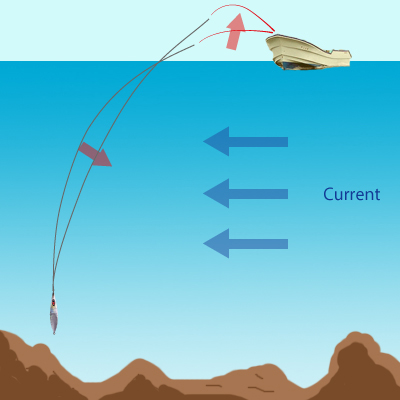
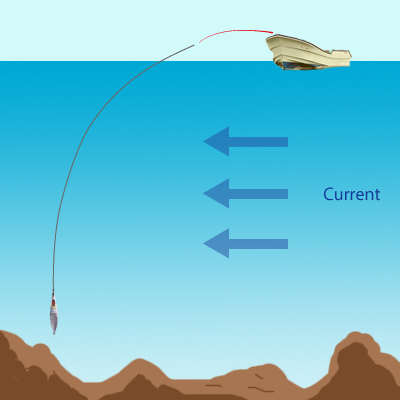


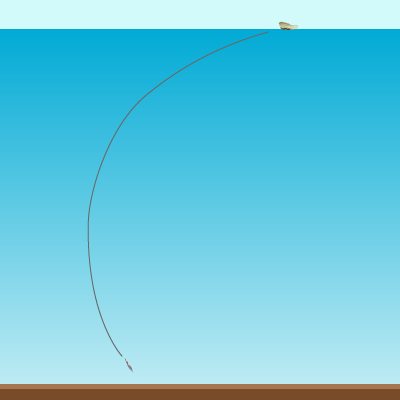
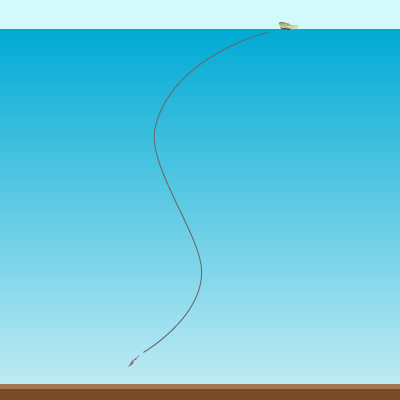
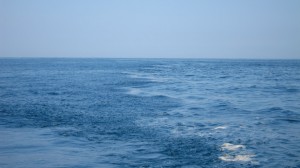
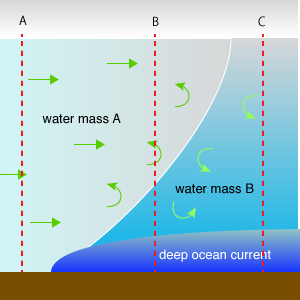


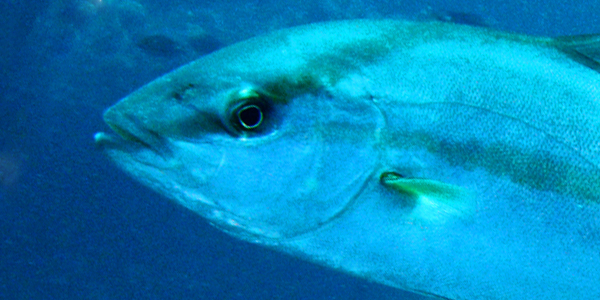

Hi Totos,
I totally agree with your article and i am about to go for the Berkley one. I found one with the following characteristiscs:
BRAND NEW BERKLEY FIRELINE BRAID LO VIS GREEN 300 YDS
15LB – 0.20mm
20LB – 0.23 mm
30LB – 0.28 mm
40LB – 0.30 mm
50LB – 0.35 mm
65LB – 0.40 mm
Should i go for the 30LB or something lower as i don’t know what the P.E. 2.0 is equal to mm.
Thank you ,
AP
Hi Andreas.
I’m not stopping you from buying Fireline, but I just want to clarify that the line I recommended in the article is Super Fireline, which came out last month. It’s selling only in Japan.
There is a guideline to regulate PE rating. But it’s really up to the line makers how they rate their lines.
The guideline is like this:
PE1.2 – 0.191mm
PE1.5 – 0.209mm
PE2.0 – 0.242mm
Watch out for fake fireline in online shops. The fake braid is rough and loose. No use. If it’s selling ridiculously cheap, think twice.
Thanks for the clarification Totos. I will continue searching 🙂
Does anyone know if the Berkley fireline Exceed is similar to the super fireline? Both are
improved versions of the original fused fireline.
Nothing compares to very light tackle…
Hi Totos,
Shimano ex 8 is made up of 8 strands to form the line.
Do you happen to know how many strands is berkley super fireline made off?
Fireline is not braided. That’s why it doesn’t stretch. It’s why it’s weak without coating. I think it’s 4 strands. The dyneema strands are only put together and coated.
Hi Totos
SHIMANO OCEA JIGGER B604(Baitcast) is it a category A rod for show jigging?
Hi Totos.
I love your site end, think it is great thing to have place where we can learn a lot about slow jigging!!I start with slow jigging few month ago and I love the tehnic.I was fishing vertical with heavy gear and until I start with light gear,didnt know what is fun..Wher I live there is not a lot fish so going on light gear was great move as i now get more fish bite..
Now I have question,I use varivas super conductor PE 2, what you think about that line?I lost one fish obout 5 kg and I start think maybe to change on 2.5 line .IS that to much thick or I need to stay at PE 2,and try shimano ocea jigger EX8 wich is stronger line.My curent line break at FG knot conection as I didnt make it tight enough..I know I must learn still a lot and any good advice will be good..
Thank you farward for your advice
Toni Croatia
Hi Toni.
Thank you very much for your compliment. Glad that my site has been helpful to you.
You just lost one fish, buddy. Still a lot to learn. I’m sure there’s got to be so much you can do before going for heavier line and compromise on the direct control.
Have you checked out this post?
http://anglers-secrets.com/v2020/slowpitchtactics/
When you have line break, study it closely. Where did it break? How was it broken? Was it tension? friction? or maybe the line was damaged? What were you fighting before the break. Were you too aggressive, or too permissive? Wasn’t drag too tight? Did you keep the same tension while fighting? How can you improve your line system? How can you improve the way you fight?
All these questions that you will never get a clear answer for. But this is what it’s all about. Refining your tackle. Refining your technique. To become as effective as we can be. “A big fish broke my line the other day, so I changed to heavier line.” It’s certainly one way. But keep in mind that in every changes, you gain something and you lose something. And there’s always many other things you can do to improve your overall efficiency.
It can be a very critical decision to switch from PE2.0 to PE2.5. In fact, I may rather have suggested to go lighter to PE1.5. You may lose more fish, but you may learn much more. When I tried PE1.0, I learned to pay so much more attention to what the line has to tell me. I’m not using PE1.0 any more but I learned a lot from the experience.
Good luck.
Hello from Greece,
I ve matched zen zagan rod with a maxel hybrid 30 reel filled with 0.20 jigman line and a 0.47 leader!what to u think of the whole set?should I go down to a 0.40leader?
Hi Triantafillos.
Thank you for your comment.
I don’t know what kind of field you are fishing and what kind of intension you have, so it’s difficult for me to make comment on your set up.
Do you see any problems? What are your thoughts for changing it?
Hi Toto. Excellent site. Wish I would of found it earlier. Just got into the jigging game. And a lot of recommendation are made by local tackle shop here in Australia. My jigging setup consist of jackall anchovie driver match with a Daiwa saltiga 15HL. I usually fish shallow reef. After reading your post have regretted spooling up the reel with PE2.5 gosen jigging line. I always fish light but on occasion I will head off shore for the big king or AJ. The problem here we have are sharks. We have to go hard on the fish. Hence the decision to move up a notch. Is there really that much difference in the feel between PE2 and 2.5. Or should I buy another spool and load it with lighter PE for shallow fishing. Mostly fish in 10-15m shallow reef for reef species. Any advise appreciated. Keep up the good work.
Hi John.
Well, line makes a difference. That’s a truth. Depending on the conditions, the jig can be dancing lively or it can be being hung on a rope.
But as you well know, it’s a balance scale with contact rate on one and catch rate on the other. And you have weighted on catch rate. It’s not a bad decision. No right or wrong. It’s a decision whether or not you were conscious of it. But you didn’t go to PE3.0!
I would stay with PE2.5. See how it goes. Good luck!
Thank you Toto sensei. I have ordered an extra spool from Daiwa and will load it up with some PE1.5. That will give me the best of both world. After all being confident with what you are doing is the most important. Especially when you first start out. I really believe what you said is right. Learn the action before worrying about the landing the big ones. Again many thanks.
My thought exactly.
When you are learning, you want to see the edge on both sides.
Good luck!
Hafa Adai Toto,
I am currently using Shimano Ex8 pe2 on ocea jigger 2000. I jig in around 75 – 150m depth of water. We jig on a boat with a drift anchor, which keeps us pretty verticle while jigging( maybe around 8 drops before I have to reel all the up and redrop) I’m thinking of switching to pe 1.5. In your experience, will this make a big difference in jig action and how it feels in the water?
Looking forward to your reply! Thank you for your time!
Hi Gary.
Oh yes, definitely. PE1.5 and PE2.0 feel very different. Once for our experiment, we have had 3 x same tackles with 3 different lines, PE1.0, PE1.5 and PE2.0 of Sunline Jigger8HG. With 210g Rector at about 100 meters deep, with a captain controlling the drift with a spanker sail.
PE1.0 and PE1.5 felt pretty similar, even though PE1.0 did feel lighter. But 4 of us anglers confirmed that PE1.5 and PE2.0 are definitely different. I think it depends on the line and it depends on the conditions. But light line does makes a difference and sometimes the difference is remarkable.
I’m pretty sure that you will improve your contact rate with PE1.5. It’s definitely more fun with lighter line.
Hi Toto… is there any different between PE1.5 (20lb 4 Braid) and PE2.0 (20lb 8 Braid)?
PE line is rated by the weight of the braid to make certain length. It basically determines the diameter but it depends on the technique.
4-ply braid is cheaper. Stronger to friction. Catches more water resistance. But there are some cheap, very bad quality products in the market. 8-ply certainly takes more effort, therefore, more expensive. The characteristics are opposite from 4-ply. But when the line is made by a fine manufacturer, the difference isn’t much. When they design these products, they have the concept, and they will use the technique and whatever ply which will meet the concept.
I don’t know who makes these 2 lines that you are holding. If the comparison is fair, PE1.5 is a better line. Lighter line for the same strength. 4-ply doesn’t matter. But you would want to be careful if it’s pound class or pound test.
http://anglers-secrets.com/v2020/fishing-line-confusion/
hello totos ,
i have an important question as i`m buying the line for slow jigging now and i`m really confused of what line to choose but i`m so close to get seaguar pe x8 #2 ( pe 2) what do you think about its quality and please tell me if you have stronger braid line
Hi Ziad.
Yes, Seaguar X8 is good. Or Varivas Avani Max Power and Shimano EX8.
Toto what kind of braid PE#1.5 do you suggest for the slow jigging? still berkley super fireline colored or for 2019 is any better out there?
Hi Spiros.
Sunline PE Jigger ULT4 is a good line. Sato Sensei uses it too sometimes. It’s a 4 strand braid. They say it stretches as little, and catches as little water resistant, as Fireline. And the price range is as low as Fireline. Personally I like this one better than Fireline.
But it’s not strong as other top-notch lines like Shimano EX8 and Varivas Max Power. But they are twice as expensive. If you are using PE1.5 in the deep, or targetting small fish in the shallow, PE Jigger.
Toto, i find in my country the “Sunline PE JIGGER ULT” PE1.5 – 25lb is this what you propose?
Yes. PE jigger ULT4. It’s a 4-ply braid. It makes a little noise on the guides. But it’s strong as 8-ply and doesn’t stretch. This is what Sato Sensei uses when.
Hi Toto finally i buy Sunline PE JIGGER ULT PE1.5 but my point is when i turn the reel i hear a noise sound.Is because of 4 strand braid?
Probably yes. We call it guide noise. It makes noise, but nothing more. That’s what Sato Sensei says.
I forgot to mention that the noise come from the spool where the braid wrapped.
I don’t know about that. There should be no conflict between the line which is loading on the spool and the line which is already sitting on the spool.